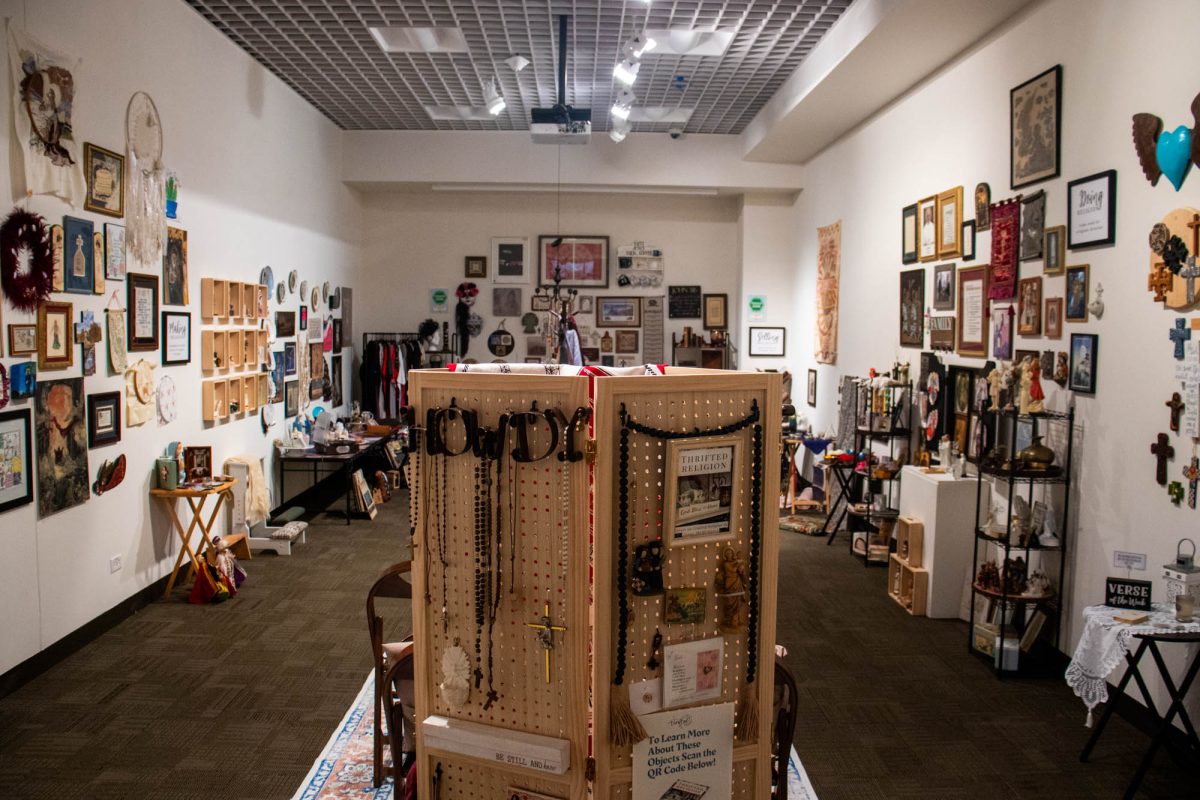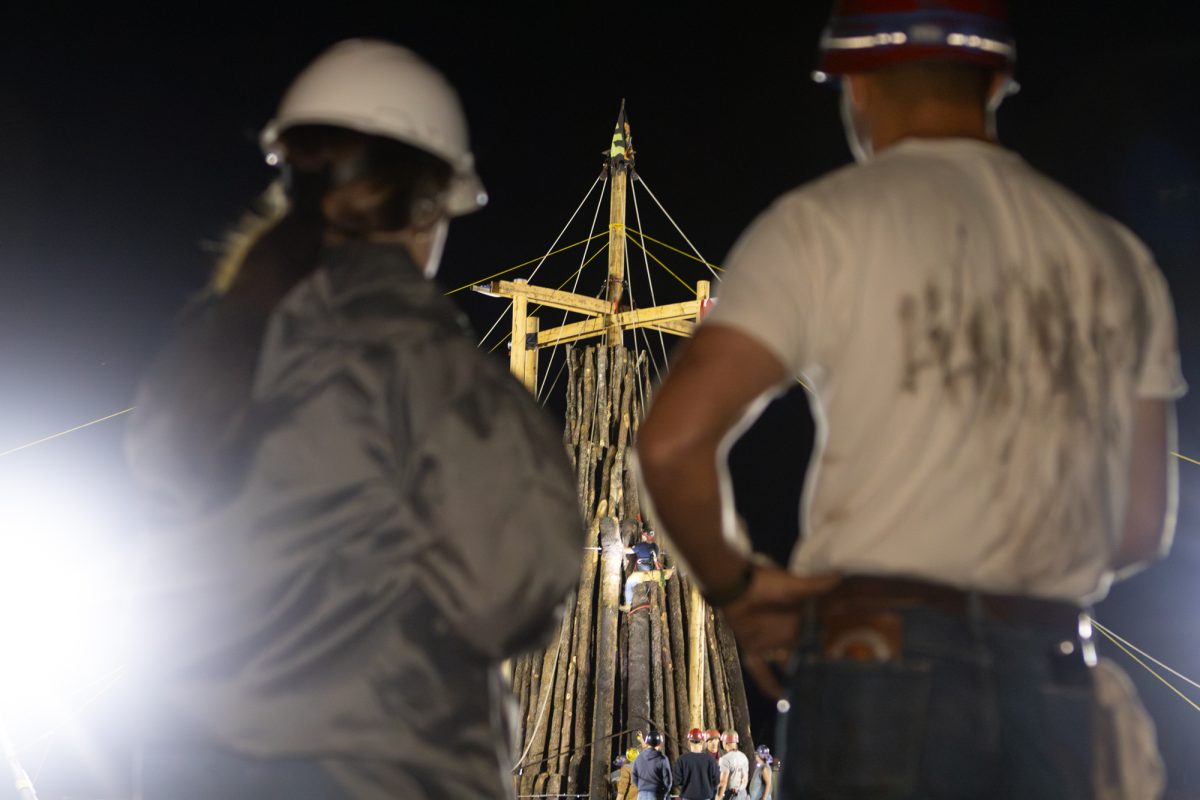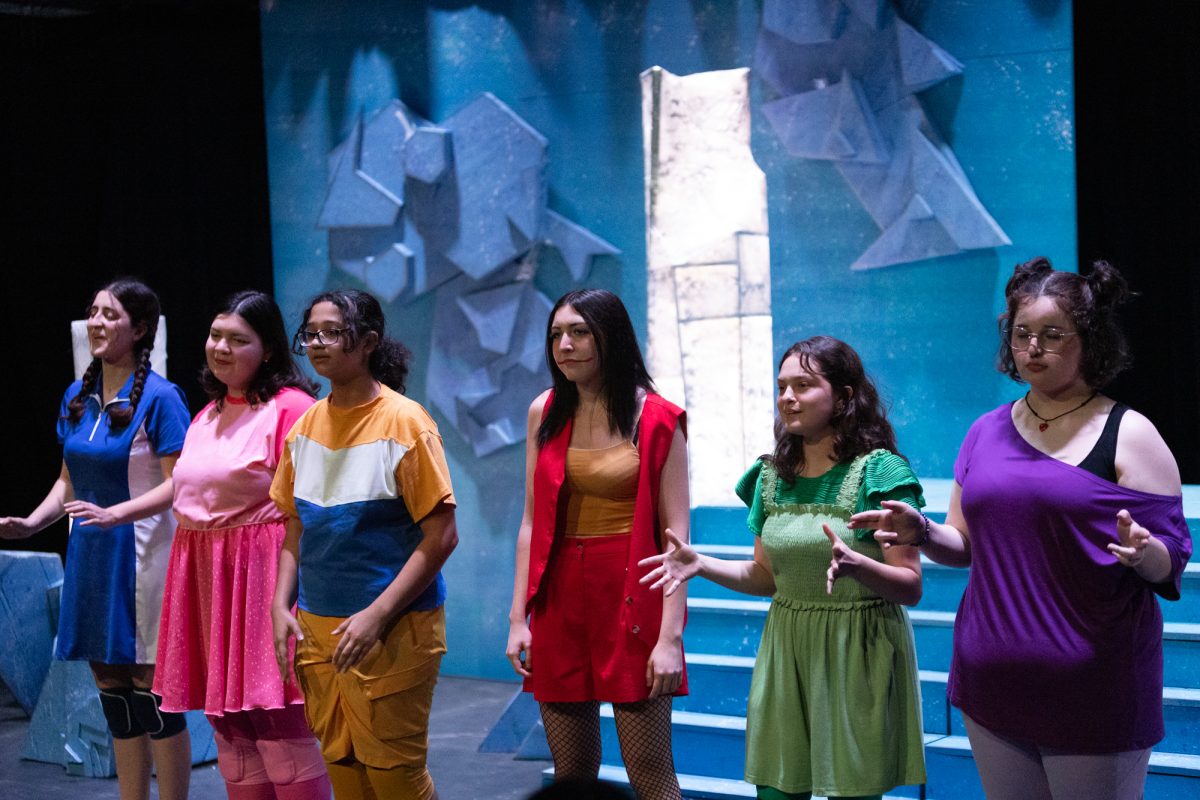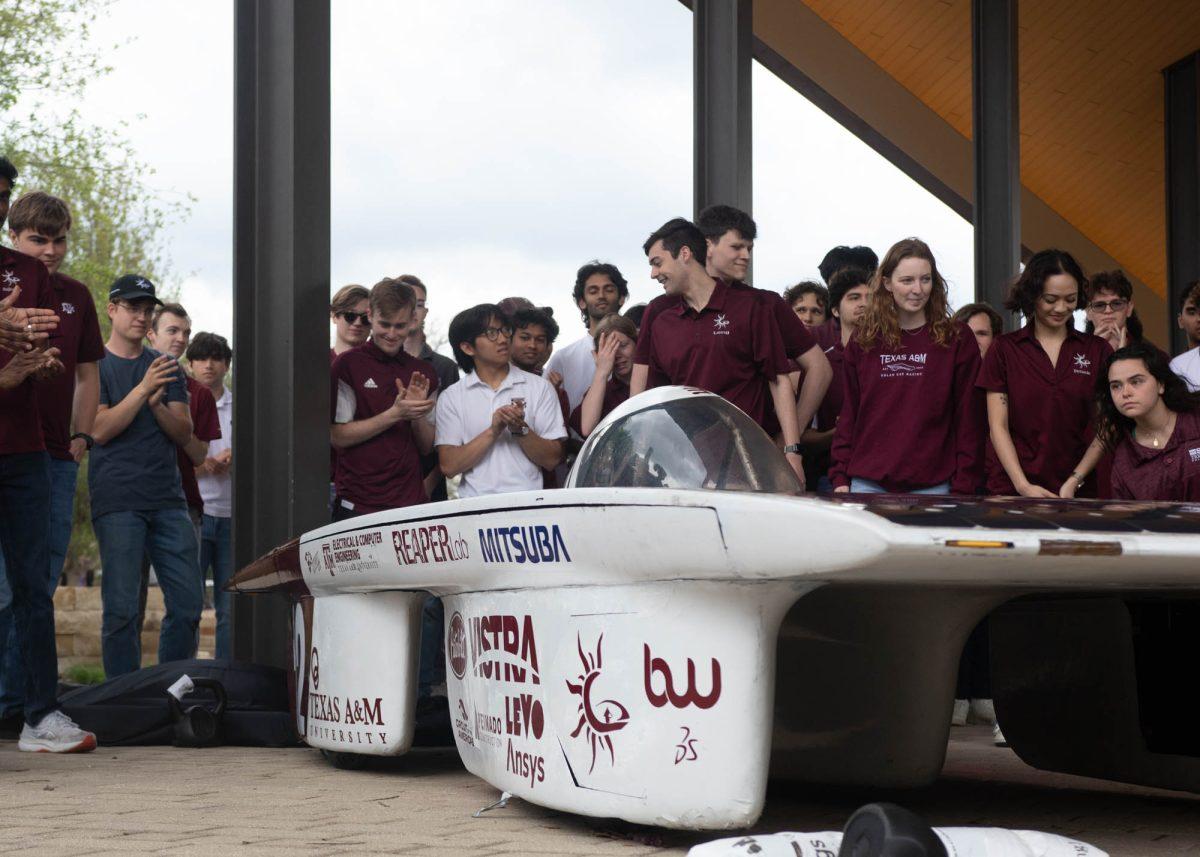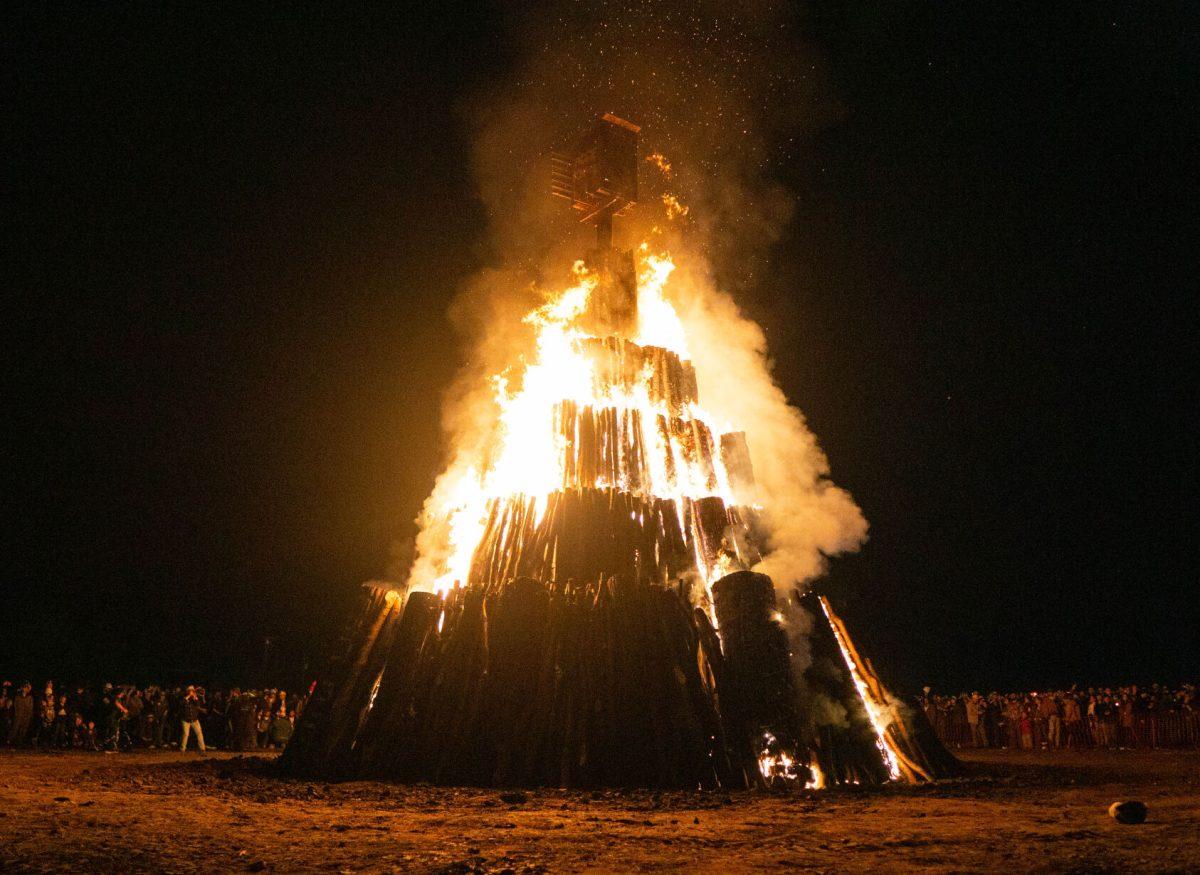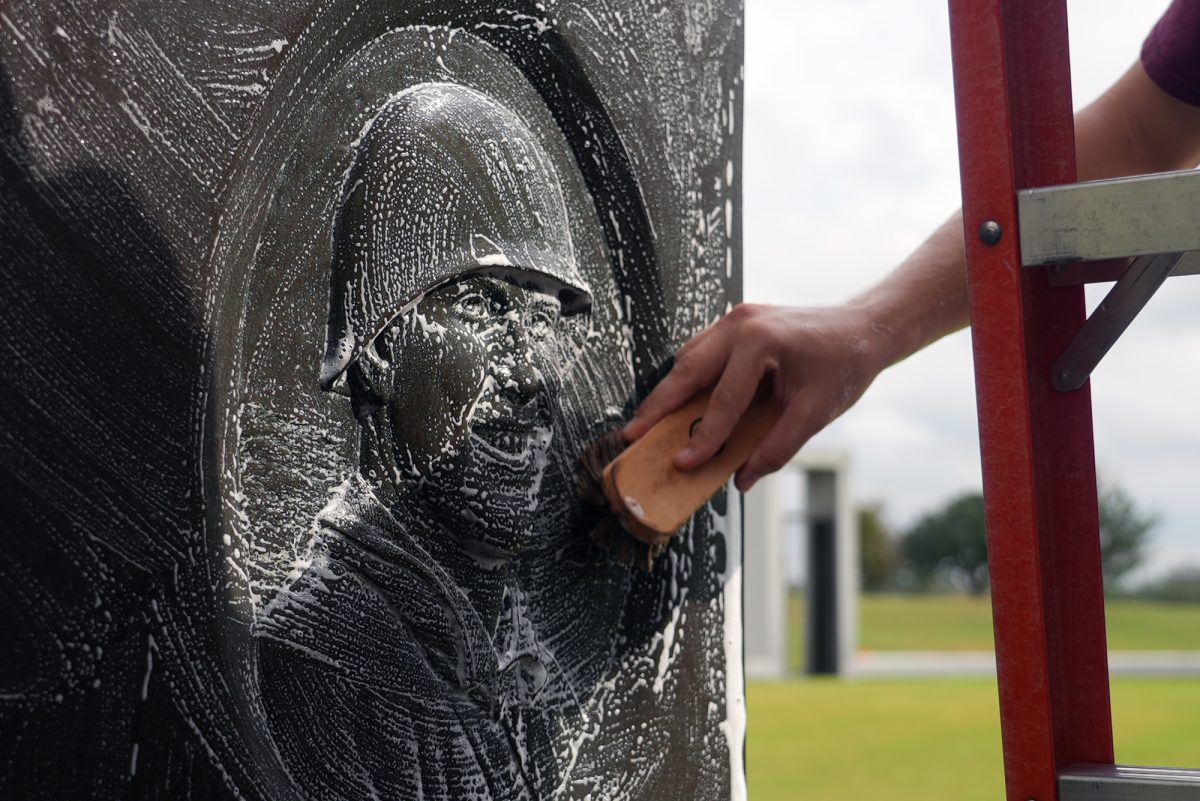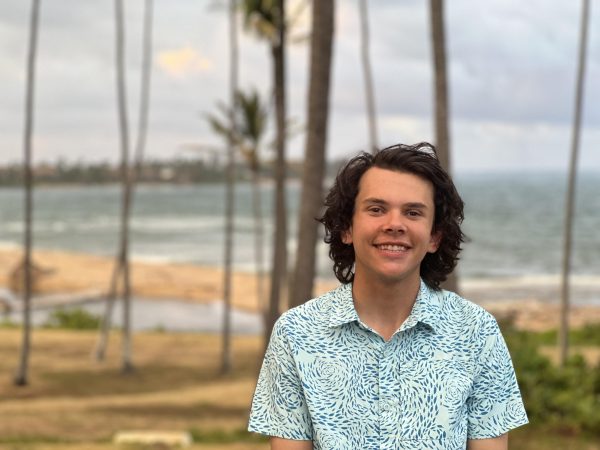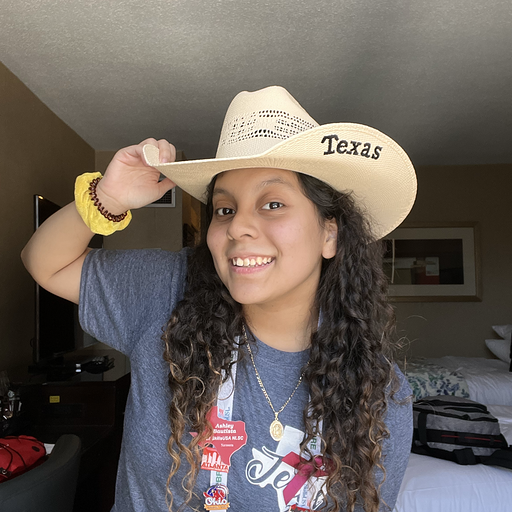The purchases line the walls: On one side, there’s an embroidered sampler with the full text of the Lord’s Prayer, offered up by a man who inherited his great aunt’s house and couldn’t bear to toss it aside.
And mere feet away, there’s a mix of detailed Buddha statues, prayer beads, a bobblehead of Pope Francis and a candle dedicated to “Saint Harry Styles.”
It’s every piece of religious iconography you could possibly think of — from just about every religion you could possibly think of — all coming from thrift stores throughout Aggieland and East Texas.
And it’s all on display at the Stark Gallery in the Memorial Student Center from Sept. 3 to 29 as part of the Thrifted Religion Exhibition.
The gallery consists of 538 religious objects separated into five themes: Finding Religion, Making Religion, Selling Religion, Doing Religion and Texas Religion.
“We’re trying to map a picture of, ‘What’s the religious diversity of Aggieland really like?’” communication professor Heidi Campbell, Ph.D. said. “How are people practicing religion, and what kinds of beliefs do they have based on what we’re finding?”
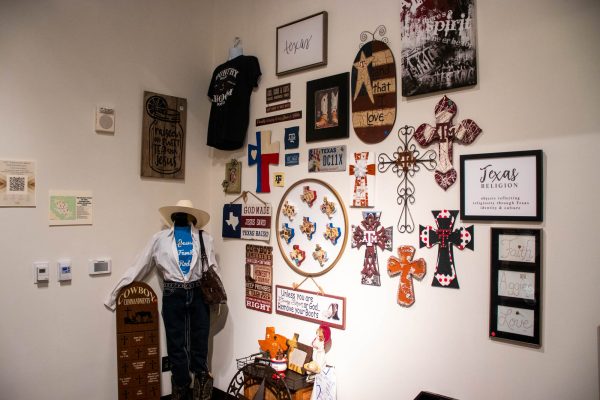
The project is Campbell’s brainchild, who combined her love of thrifting with her career of studying communication and religious studies.
“I’ve always loved to thrift, and I always collected antiques,” Campbell said. “And then I began to notice a lot of religious stuff around. And I was surprised where I was not just finding things like crucifixes and rosaries, but I started finding Buddhist statues and prayer beads from Hinduism. And so I began to say that, ‘Wow, there is much more diversity than I even thought.’”
Campbell got her classes involved in the project, turning it into an extensive ethnography of Aggieland’s religious identity.
“They would study one particular local thrift store, and they would just go there and catalog, ‘What are all the religious items I see?’ ‘How long do they stay on the shelves?’” Campbell said. “That’s what we’re mapping. What are the most common religious symbols, the religious objects and the religious sayings that showed up in the thrift store?”
Meg Boone, one of the students involved in the project, said the research process was more complicated than it may seem.
“You’d go through and say, ‘Okay, I found a cross,’” Boone said. “Well, is it a Protestant cross? Is it a Catholic cross? Is it a Baptist cross? How do you know where is it from? How much was it? Where did we find it? And kind of ask all of those questions, and then organize all of the items and see what the value, the meaning, if there was symbolism to it, why was it here.”
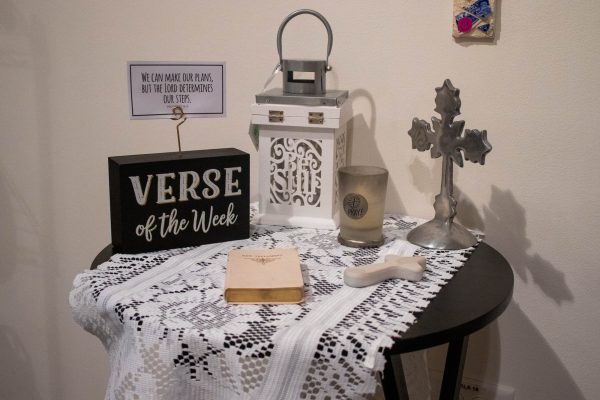
But for Boone, the opportunity to work with Campbell to promote a project that was both passionate and fun was a chance she couldn’t pass up.
“What she’s doing is really, really cool,” Boone said. “In the ways of research, she’s being progressive and doing something that is exciting and fun in research, and I think we should encourage that.”
Ariel Feldman, another of Campbell’s students involved in the project, said she was surprised by the number of Jewish items she found during the research process — especially because she is Jewish herself.
“I didn’t expect to find Jewish items in general,” Feldman said. “Because we pass down a lot of our items when it comes to books, music, etc. A lot of it is passed down through family, so I honestly didn’t really expect to find a lot of it through thrift stores because a lot of it isn’t necessarily mass-produced. But anytime I found something, that was always really cool and surprised me.”
According to a Pew Research Center study, 77% of Texas’ religious adults identify as Christian. As such, it’s no surprise that most of the items in the gallery are tied to Christian denominations in some way.
But Boone says the gallery is an opportunity for students who may not see their religion represented across campus to be seen and feel heard.
“I’m Christian myself, and so in the South, I feel very represented because everywhere I turn, there is a cross, which makes me feel really comfortable,” Boone said. “But I know that there are a lot of students on this campus that might not feel like their religion is represented, and, religious or not, anybody would like this exhibit. So, it’s interesting. I would want people to come and leave going, ‘I feel represented, and I feel like there’s a lot that I didn’t know about religion in Texas now that I do.’”
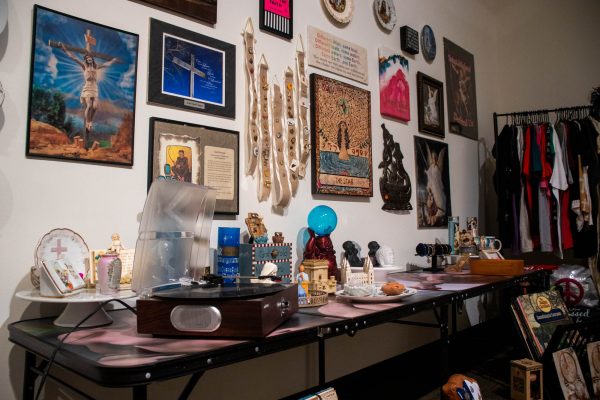
Campbell aims for the gallery to force visitors to think about religion — both in ways that make them comfortable and uncomfortable.
“I’m hoping that people find something they’re surprised about,” Campbell said. “I’m hoping that they find something in the exhibition that, ‘Hey, this resonates with me. That’s how I see religion,’ whether that’s a positive or a more critical reaction. And I’m hoping that they’ll find something that maybe makes them surprised or even a little upset because, ‘That’s not what I thought.’ Because as I read religious objects, the meaning that gets communicated may not be the meaning that people intend.”



